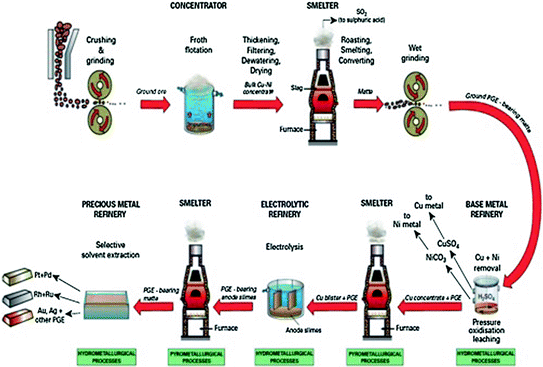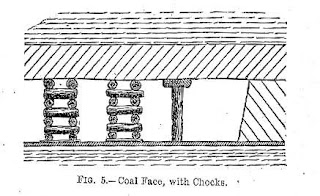mining & refining nickel ores
Mining and Refining of Nickel Ores
Mining
Nickel is found in two different types of ore, magmatic sulfide and laterite. The former are usually mined by underground techniques or in large and deep open pits for some new deposits; the latter are mined in shallow pits using heavy earth-moving equipment such as shovels, draglines, and front-end loaders.
Treating Sulfide Ores
Beneficiation -—Benficiation is the next step. It converts the ore into a form that can be smelted to separate the metal. The goal of the process is to make a smaller volume that will require less heat and chemicals to separate the metal. Sulfide ore is first ground in large mills to powder that is fine enough that the particle size is less than that of individual grains of the ore minerals. The nickel-bearing minerals are then separated from the gangue by the flotation process. The ground ore is mixed in large vats with water and chemicals such as fatty acids and oils that increase the hydrophobicity of the nickel-bearing minerals. Mechanical and pneumatic devices stir the mixture and produce air bubbles, which are injected at the base of the vats. Nickel-bearing minerals adhere to the bubbles and float to the surface where they are recovered by scraping away the froth. The magnetic properties of Fe-Ni sulfides are used to aid their extraction. The waste from this process contains all of the other minerals and is known as tailings.
Smelting and Refining— The nickel concentrates from the sulfide ores are then dried, mixed with flux, and heated to about 1350 °C in an oxidizing environment in smelters. There action of oxygen with iron and sulfurinsulfide ore supplies some of the heat required for smelting. The product is an artificial nickel-iron sulfide known as matte, which contains25to45%nickel.The iron is then converted to an oxide, which combines with silica flux to form a slag. When the slag is drawn off, the matte contains 70 to 75 % nickel. The nickel matte is either leached at high pressure with ammonia and the metal is recovered from solution, or the matte is roasted to produce high-grade nickel oxide. The final stage is electro refining: the nickel oxide is dissolved in sulfate or chloride solutions in electrolytic cells and pure nickel metal is deposited on the cathode. Sulfur is released in large quantities at several stages of the process. Some is recovered to be used in industry as a fertilizer, but a large fraction is lost in smelter fumes and constitutes a serious pollutant (Fig. ).
 |
| Flowsheet for processing of Ni–Cu–PGE sulfide ores (from British Geological Survey, Platinum commodity profile, 2009 |
Treating Laterite Ores
Laterite nickel ores do not contain sulfur and do not cause SO2 pollution, but separating nickel from the ore requires much higher energy input. The ore minerals are oxide or silicates that are not amenable to flotation and other conventional processes. Thus, large tonnages of untreated ore must be smelted. In addition, there actions of oxide ores during smelting are not exothermic, which increases the amount of energy required by the smelter. The first step is removal of water from hydrous ore and gangue minerals, which is usually done by roasting in large high-temperature kilns. The nickel oxide is then smelted in furnaces that run at 1360 to 1610 °C, the high temperatures being required to accommodate the high magnesium content. Most laterite smelters produce a ferronickel alloy that is sold directly to steel manufacturers. More recently, lateritic ores are processed using hydrometallurgy. In this method, nickel ± cobalt, is extracted from silicate or oxide ores via leaching at high pressure in concentrated acid or alternatively in ammonia. Following extraction the metals are purified by smelting and electrolytic processes.









Comments
Post a Comment